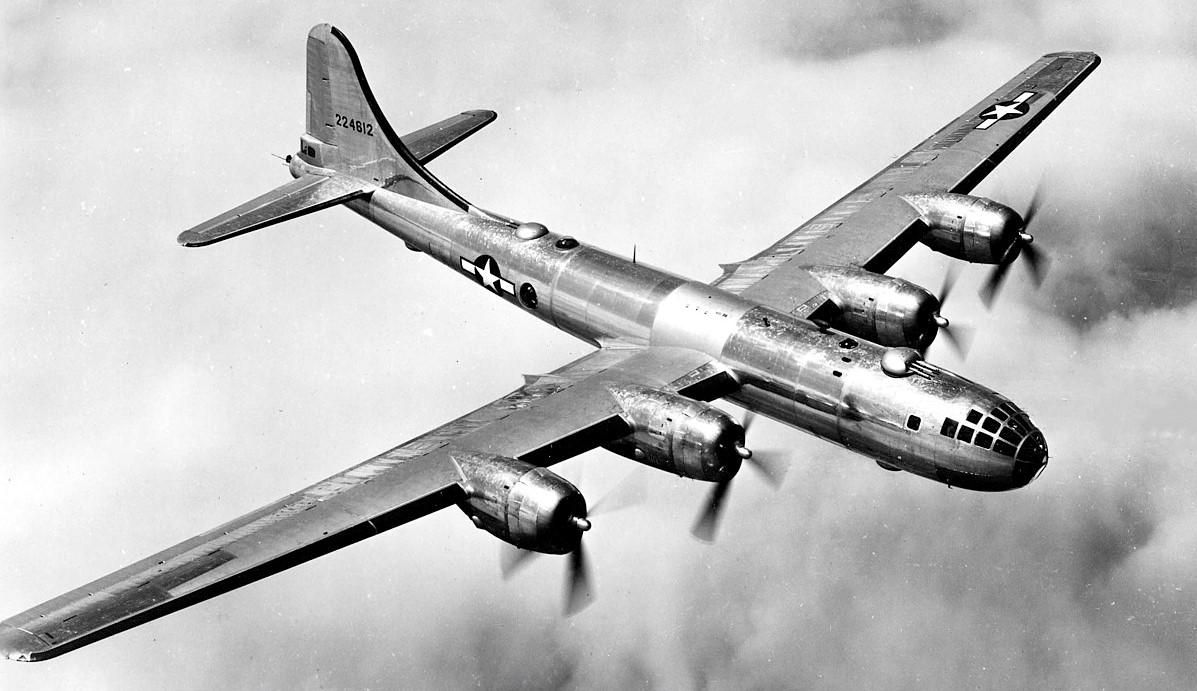It was June 12, 1946. World War II was over, and East Tennessee along with the rest of the country was getting itself back to normal. The fledgling Great Smoky Mountains National Park, in its 12th year, was also trying to get back to its natural normal after decades of clear cutting by timber companies.
On that day, around 9 a.m., two GSMNP highway workers had diverted from Newfound Gap/U.S. 441 and were driving out the road to Clingman’s Dome. Exactly what their task was is unknown, but what they found completely altered the trajectory of their day. A hulking, smoking airplane engine lay next to the road. The morning light showed butchered trees, a debris field, and the unfortunates who’d fallen from the sky in a plane shattered on the mountainside.

B-29 crash site viewed from Clingman’s Dome Road (Photo credit KNS digital archives).
The park workers had no choice but to head back down the mountain to summon help, once they’d determined there were no survivors. There was no telegraph at Clingman’s Dome nor pay phone at Newfound Gap. Most communications still happened the hard way in 1946.

Rudimentary map of B-29 crash site (Photo credit: KNS digital archives)
The plane in question was a U.S. Army Air Force (as it was then called) B-29 Superfortress, the same type of plane that carried the bombs that ended WWII nearly a year earlier. The plane, as it turned out, was on a training mission. Its fateful journey took it on a non-stop flight from MacDill Airfield near Tampa, Florida, to Chicago, Illinois, on June 11, leaving McDill around 7 p.m. Once there it refueled for its mission back, its path once again taking it over the Smoky Mountains.

Debris from the crashed B-29 (Photo credit: KNS digital archives).
The crew’s last contact came at 2:16 a.m., a check-in with McGhee-Tyson Airport. They were informed of scattered thunderstorms in the area, but were never heard from again. The plane crashed roughly 400 yards east of Clingman’s Dome, the highest point on the Tennessee side of the Smoky Mountains, near Collins Gap. Alarms were raised when the plane did not return to McDill at its expected arrival of 5 a.m.
The crash was the headline for The Knoxville News-Sentinel’s evening edition: “B-29 Hits Smokies, 12 Killed: Big Fort Cracks Up at Dome.” The U.S. Army, as would be expected, closed the road to the Dome. They also put the GSMNP under a blackout notice to release no further information about the crash. An ambulance arrived from Rawlings-Miller Funeral Home in Maryville. By the time the KNS evening edition came out, nine of the perished 12 had been transferred to Third Air Force Headquarters at Greenville, South Carolina.

Parachutes from the ill-fated plane were found dangling from trees away from the crash site (Photo credit: KNS archives).
The Air Force collected the plane’s instruments in hopes of discerning some cause for the crash. We were not yet in the era of the ubiquitous “black box.” The B-29 could fly several thousand miles without refueling and as high as 32,000. Yet this one just failed to clear the Smoky Mountains by a few hundred feet. The KNS reported that the plane cut a swath 60 yards wide up the mountain, snapping trees as it went, indicating to experts “that the pilot had been trying to gain altitude when the mountain was struck.”
No cause for the tragedy was ever released. In the decades since, the mountain has reclaimed the crash site, not far from the Appalachian Trail.
Beth Kinnane writes a history feature for KnoxTNToday.com. It’s published each Tuesday and is one of our best-read features.
Sources: Knoxville News Sentinel digital archives, Historic Disasters of East Tennessee by Dewaine A. Speaks (The History Press)

